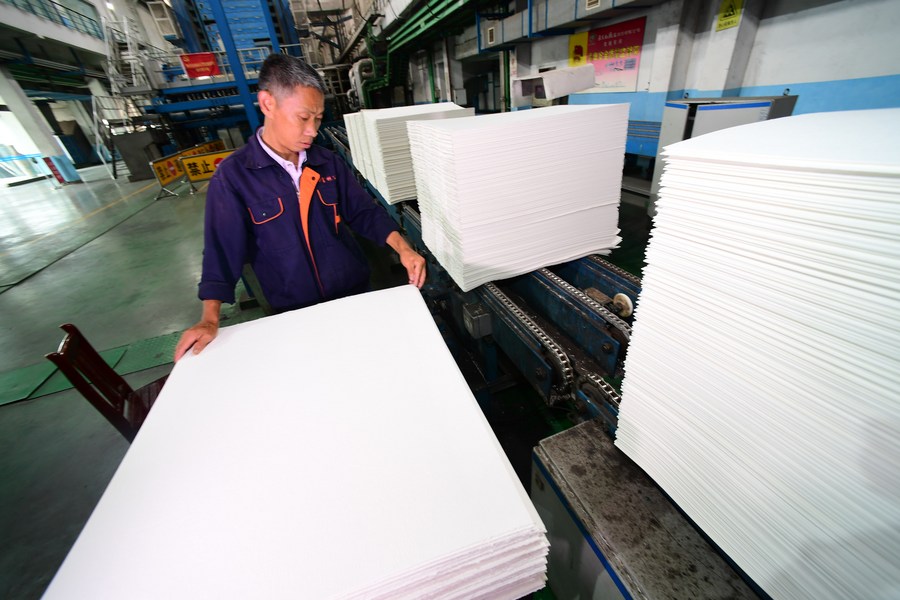Tech innovation, green energy crucial for carbon neutrality in China's paper-making industry
China’s paper-making industry, one of the first eight sectors included in carbon trading in the country, is looking to optimize energy structure and promote green development, particularly through technological innovation.

A worker makes paper at a paper production company in Chishui City, southwest China's Guizhou Province, May 16, 2020. (Xinhua/Yang Ying)
At present, China's paper-making industry mainly relies on the heat generated by coal, natural gas and other fossil energy for pulp and paper production. Fossil fuel accounts for about 80 percent of the purchased energy, while biomass energy accounts for less than 20 percent of the total.
Meanwhile, the per capita paper consumption in China is currently only about half of that in developed countries, according to data released by the China Paper Association. It is estimated that by 2035, the per capita paper consumption in China will stand between 120kg and 130kg, while the supply volume still needs to be increased by 50 million to 70 million tons prior to 2035.
China's paper-making industry "faces unprecedented challenges" in achieving carbon peak and carbon neutrality goals, disclosed Zhao Wei, secretary general of the China Paper Association.
Zhao pointed out that the sector needs to make redoubled efforts to adjust the industrial and raw material structure, improve productivity, energy efficiency and production technology, reduce the use of fossil fuel, and boost the proportion of green and biomass energy.
If these measures can be implemented properly, the carbon emissions of paper related industries can peak in 2030, and the energy consumption per unit product can be further reduced by 2 to 3 percentage points on the basis of the 7 percent reduction plan in the next five years, added Zhao.
Some paper manufactures have already taken actions with this goal in mind. APP-China, a pulp and paper manufacturing company in China, plans to reduce emissions by 30 percent by 2030. Some of the things the company is doing to reach this target include gradually replacing fossil fuels such as coal with biomass energy, improving the reuse rate of water and reducing water consumption through technological innovation and equipment improvement.
"Achieving carbon peak and carbon neutrality is far more challenging than other environment-related protection tasks. In addition to the top-level design of the country and the positive actions of all parties, we need to reach the goal through technological innovation and advanced technology," said Sun Xiaohua, chairman of the China Environmental Protection Federation.
Photos
Related Stories
Copyright © 2021 People's Daily Online. All Rights Reserved.










